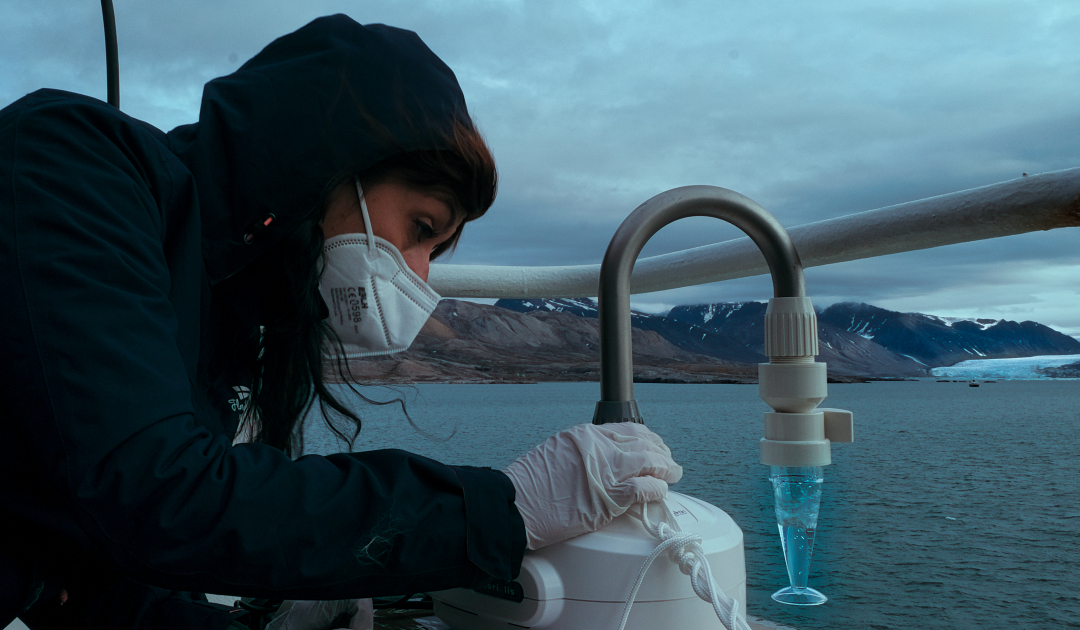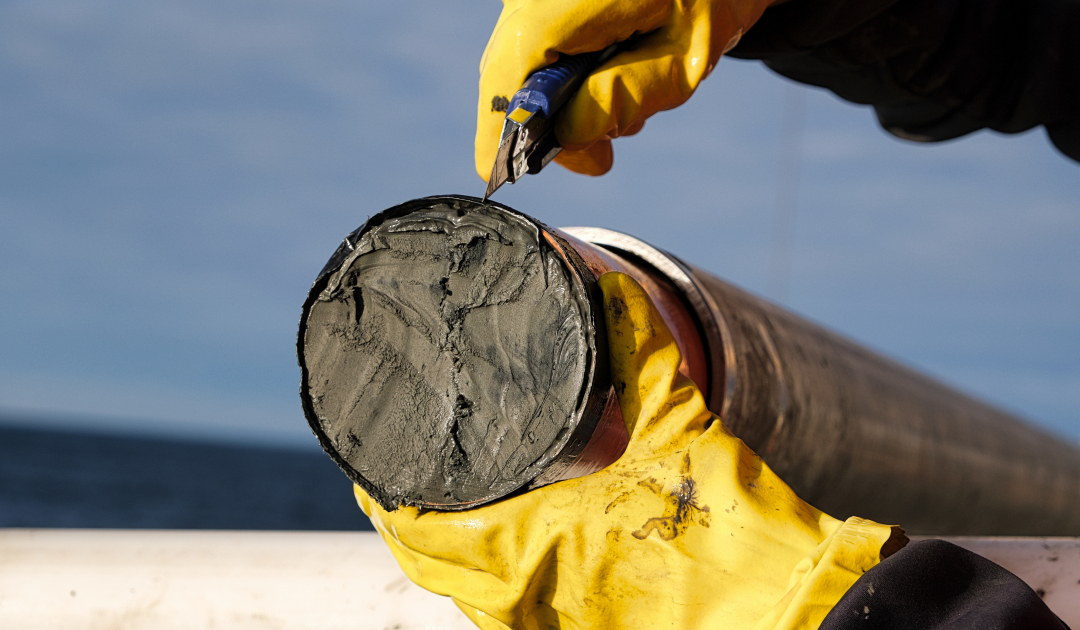
Italy has a long tradition in marine research. Some of the most prestigious institutions are located in the country on the Mediterranean. But what many do not know: Italy also runs a distinct and active research program in the polar regions. In the Antarctic, the country operates two stations, and in the Arctic, too, Italy intends to devote more attention to the various branches of research. Journalist and guest author Jacopo Pasotti from the Italian RADAR magazine was aboard the Italian research icebreaker Laura Bassi this year and gives an insight into Italian Arctic research.
“We are away from all the trade routes, the fishing boats don’t come here. We are really far away from everything,” says Giuseppe Borredon, the captain of the icebreaker Laura Bassi. The vessel has been in service with the Observatory of Experimental Geophysics and Oceanography (OGS) of Trieste since 2019. Apart from a few fulmars sailing over the surface of the waves in the hope of getting the remains of a catch of fish, which unfortunately this ship does not make, there are only low clouds and a mixture of rain and snow around us: the breath of the Greenland cap a few nautical miles away from us. The first human outpost is several days’ journey away. The ship sails along the 75th parallel. Departing from Svalbard, she crosses the Greenland Sea, the northernmost part of the Atlantic Ocean. Monitors in the ship’s laboratory, linked to a high-resolution sonar mounted under the keel, show the passage from the Eurasian continental shelf. A few days later, the instrument shows the crossing of the deep sea, then the crossing of the mid-ocean ridge that separates our continent from the American one. Finally, after days of navigation, the arrival of the Greenland continental shelf is observed.

On this route the ship stops several times and puts the bow into the wind. Thanks to an automatic and somewhat sophisticated propeller system, it maintains its position between the waves, which are sometimes more than three meters high. Between time-related disturbances, mechanical or electronic failures, which the crew, technicians and scientists repair in the laboratories or in the hold, data on temperature, salinity, chemical properties (including possible emerging pollutants and the presence of microplastics) are collected at each station, and directions and strength of currents are measured, down to a depth of 3,700 meters. At some stations, water samples are taken using special bottles that can be capped at different depths to study microbial and microscopic plant communities. Then, using special sieves, the experts collect organisms with strange names and up to the size of krill (in this case, a few millimeters). It’s a whole lot of life that we’re virtually unaware of, like copepods or foraminifera, but which are at the base of the marine food chain. Their condition and changes are essential for knowledge of the state of the entire marine ecosystem.

The team consists of a mix of experts in microbiology, marine biology, chemistry, oceanography, geology from the OGS and the Institute of Polar Sciences of the National Science Council CNR (ISP-CNR). “Unfortunately, we still know little about the oceans,” explains OGS oceanographer Vedrana Kovacevic. “The oceans behave like the atmosphere with their currents and turbulence, only much slower”. In this sea in particular, and at some other points above the Arctic Circle, the Atlantic currents, after having traversed the whole world, wash around the Svalbard archipelago and sink to continue their long underwater journey, bringing them to resurface – perhaps after a few centuries in other oceans of the earth. It is impossible to understand the Earth’s atmosphere without understanding the oceans, which are the planet’s true energy store. Of all the excess heat from greenhouse gases, 90% was stored by the oceans and remixed by ocean currents.

“The 75th parallel is hugely important. It is a place of formation of deep waters that renew the deep sea environments. This process changes the temperatures of the Atlantic waters and plays an important role in the storage of CO2 “, says Maurizio Azzaro, biologist of the ISP-CNR in Messina. “It has been monitored by the Norwegians for a long time. The data collected during this mission is then shared with them and is part of an international project to monitor the state of the Arctic along the entire food chain, from viruses to fish.”
“We observe the arrival of organisms that migrate north from low latitudes in search of cold environments that were previously several latitudes further south”
Marina Monti, OGS Trieste
“Unfortunately, the renewal process of deep waters is weakening,” adds Manuel Bensi, OGS oceanographer. In other words, we are witnessing a progressive “Atlantification” of the Arctic Ocean with the arrival of Atlantic animal and plant species invading polar waters. The problem is that if the process continues to weaken, the oxygen supply to deep-sea waters could even stop. This would have an impact on the entire food chain and would also have an impact on us. It’s another effect of global warming. This is confirmed by Marina Monti, OGS biologist and expert on marine microorganisms: “We are observing the arrival of organisms that migrate northwards from low latitudes in search of cold environments that were previously a few latitudes further south”. Monti explains that we know very little about these seas, partly because research only takes place for a few months of the year due to the operational difficulties of these regions.

In addition to water samples, some cores of submarine sediments taken at a depth of 200 meters will be used to reconstruct events tens of thousands of years ago when sudden partial melting of the ice caps occurred. In the not too distant past, there have been cases of the sea rising 20 metres in a few hundred years. Understanding how this happened can be useful in refining current climate models, explains Renata Lucchi, a geologist at OGS.

It is a few weeks of intense work, sometimes not resting for 24 hours and sometimes having to stop for a whole day in stormy seas. In this case, the ship turns to, puts the bow into the wind and waits, at the mercy of the waves, until the disturbance has passed. Looking at the activities on board, the deep significance of the expedition aboard theLaura Bassi becomes clear: Although the polar regions are far away from our cities, they are the key to understanding the future of oceans, atmosphere and ecosystems. Especially in the near future, much will depend on how the Arctic, the so-called “cold engine” of the Earth system, will develop. It is no coincidence that in the summary for policymakers of the latest IPCC report, released a few months ago, the Arctic is the only one explicitly represented. Ice caps and sea ice are also mentioned: the changes taking place in the polar regions, both at the environmental level and in the circulation of ocean currents, will also affect cities and activities in Europe and throughout the Northern Hemisphere. Missions like these feed the complex models we use to reconstruct the past, observe the present, and construct possible futures. The ship, in the middle of the Greenland Sea, a self-sufficient navigation laboratory for many weeks, is one of the contributions that the scientific world is making to the knowledge of the oceans and their health, from viruses to fish, in one of the nerve centres of the planet: the Arctic.
This article by Jacopo Pasotti of RADAR Magazine first appeared in La Repubblica newspaper. As part of the cooperation with RADAR, the article is published exclusively in German and English by PolarJournal.





